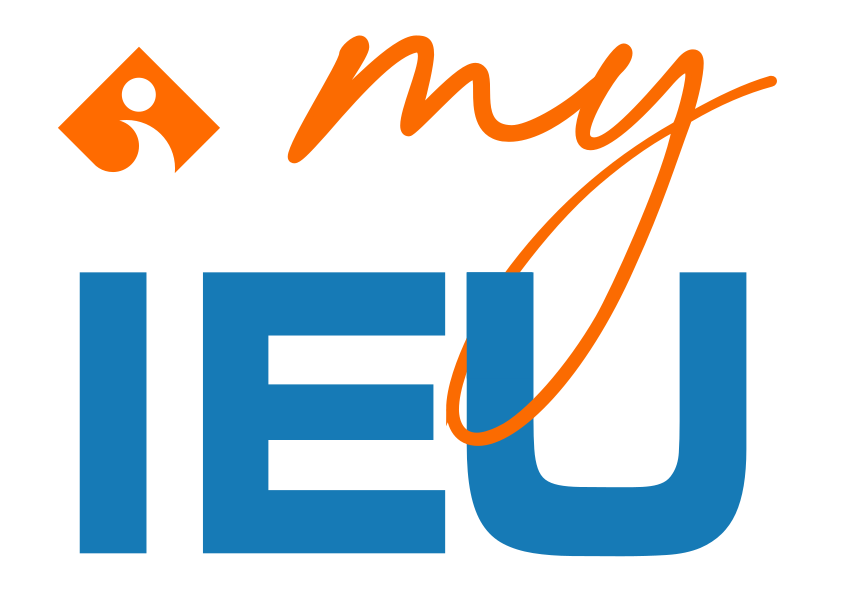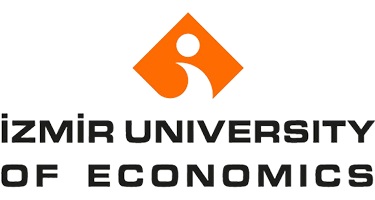CE 536 | Course Introduction and Application Information
| Course Name |
Human-Computer Interaction
|
|
Code
|
Semester
|
Theory
(hour/week) |
Application/Lab
(hour/week) |
Local Credits
|
ECTS
|
|
CE 536
|
Fall/Spring
|
3
|
0
|
3
|
7.5
|
| Prerequisites |
None
|
|||||
| Course Language |
English
|
|||||
| Course Type |
Elective
|
|||||
| Course Level |
Second Cycle
|
|||||
| Mode of Delivery | - | |||||
| Teaching Methods and Techniques of the Course | DiscussionCase StudyApplication: Experiment / Laboratory / WorkshopLecture / PresentationReport Writing | |||||
| National Occupation Classification | - | |||||
| Course Coordinator | - | |||||
| Course Lecturer(s) | ||||||
| Assistant(s) | - | |||||
| Course Objectives | The objective of this course is to give knowledge and experience about user-centric design methodologies, tools and contemporary research topics in order to help students develop more effective user interfaces, design applications with high usability, and develop new interaction techniques. |
| Learning Outcomes |
The students who succeeded in this course;
|
| Course Description | Teaching the basic principles of user interfaces. Introduce students to usability models and principles. Having students carry out user and task analyses. Teaching design, prototype development and evaluation through having students complete term projects. Teaching new user interface techniques. Teaching how to carry out user-centric research. |
| Related Sustainable Development Goals |
|
|
|
Core Courses | |
| Major Area Courses | ||
| Supportive Courses | ||
| Media and Management Skills Courses | ||
| Transferable Skill Courses |
WEEKLY SUBJECTS AND RELATED PREPARATION STUDIES
| Week | Subjects | Related Preparation |
| 1 | Introduction to Human-Computer Interaction Research | Lazar etal Ch. 1, Stephanidis & Salvendy Vol.01 Ch.s 1-2, Mackenzie Ch. 1 |
| 2 | HCI Foundations: Cognition, Perception, Mental Models, Language, Memory, Emotion. | Stephanidis & Salvendy, Vol.01, Ch.s3-11, Mackenzie Ch. 2 |
| 3 | HCI Research Methods | Stephanidis & Salvendy, Vol. 03, Ch.s 1-8, Mackenzie Ch.s 4-6, Lazar etal Ch.s 2-5 |
| 4 | HCI Interaction Methods and Technologies | Stephanidis & Salvendy, Vol. 04, Mackenzie Ch. 3 |
| 5 | HCI Design Methods | Stephanidis & Salvendy, Vol. 03, Ch.s 9-17, Lazar etal Ch.s 13-16 |
| 6 | HCI in Intelligent Environments | Stephanidis & Salvendy, Vol. 05 |
| 7 | HCI in Various Application Domains: Health, Games, Interactive Media, Business & Commerce, Manufacturing | Stephanidis & Salvendy, Vol. 06 |
| 8 | Midterm Exam | |
| 9 | Case Studies: User Experience in Software Engineering and Artifical Intelligence Technologies | Various academic articles and papers |
| 10 | Case Studies: Virtual / Augmented / Mixed Reality | Various academic articles and papers |
| 11 | Case Studies: Eye Tracking and Multimodal Interaction | Various academic articles and papers |
| 12 | Case Studies: Player-Computer Interaction | Various academic articles and papers |
| 13 | Case Studies: Brain-Computer Interfaces and Wearable Technologies | Various academic articles and papers |
| 14 | Case Studies: Human-Robot Interaction and Transhumanism | Various academic articles and papers |
| 15 | Review of the Semester | |
| 16 | Project Presentations |
| Course Notes/Textbooks | Research Methods in Human-Computer Interaction, Lazar, J., Feng, J. H., & Hochheiser, H. (2017). Morgan Kaufmann. Human-Computer Interaction: Foundations and Advances, Stephanidis, C., Salvendy G. (2024). Taylor & Francis. |
| Suggested Readings/Materials | Human-Computer Interaction: An Empirical Research Perspective, MacKenzie, I. S. (2024). Morgan Kaufmann. Research Methods for Human-Computer Interaction, Cairns, P., Cox, A. L. (2016). Cambridge University Press. Designing The User Interface: Strategies for Effective Human-Computer Interaction, Shneiderman, B., Plaisant, C., Cohen, M., Jacobs, S., Elmqvist, N., Diakopoulos, N. (2018). Pearson. Human-Centered AI, Shneiderman, B. (2022). Oxford University Press. Selected papers that are posted on the web page. |
EVALUATION SYSTEM
| Semester Activities | Number | Weigthing |
| Participation | ||
| Laboratory / Application | ||
| Field Work | ||
| Quizzes / Studio Critiques | ||
| Portfolio | ||
| Homework / Assignments | ||
| Presentation / Jury |
3
|
20
|
| Project |
1
|
50
|
| Seminar / Workshop | ||
| Oral Exams | ||
| Midterm |
1
|
30
|
| Final Exam | ||
| Total |
| Weighting of Semester Activities on the Final Grade |
100
|
|
| Weighting of End-of-Semester Activities on the Final Grade | ||
| Total |
ECTS / WORKLOAD TABLE
| Semester Activities | Number | Duration (Hours) | Workload |
|---|---|---|---|
| Theoretical Course Hours (Including exam week: 16 x total hours) |
16
|
3
|
48
|
| Laboratory / Application Hours (Including exam week: '.16.' x total hours) |
16
|
0
|
|
| Study Hours Out of Class |
15
|
5
|
75
|
| Field Work |
0
|
||
| Quizzes / Studio Critiques |
0
|
||
| Portfolio |
0
|
||
| Homework / Assignments |
0
|
||
| Presentation / Jury |
3
|
7
|
21
|
| Project |
1
|
50
|
50
|
| Seminar / Workshop |
0
|
||
| Oral Exam |
0
|
||
| Midterms |
1
|
31
|
31
|
| Final Exam |
0
|
||
| Total |
225
|
COURSE LEARNING OUTCOMES AND PROGRAM QUALIFICATIONS RELATIONSHIP
|
#
|
Program Competencies/Outcomes |
* Contribution Level
|
|||||
|
1
|
2
|
3
|
4
|
5
|
|||
| 1 | Accesses information in breadth and depth by conducting scientific research in Computer Engineering, evaluates, interprets and applies information. |
-
|
-
|
-
|
-
|
X
|
|
| 2 | Is well-informed about contemporary techniques and methods used in Computer Engineering and their limitations. |
-
|
-
|
-
|
X
|
-
|
|
| 3 | Uses scientific methods to complete and apply information from uncertain, limited or incomplete data, can combine and use information from different disciplines. |
-
|
-
|
-
|
X
|
-
|
|
| 4 | Is informed about new and upcoming applications in the field and learns them whenever necessary. |
-
|
-
|
-
|
X
|
-
|
|
| 5 | Defines and formulates problems related to Computer Engineering, develops methods to solve them and uses progressive methods in solutions. |
-
|
-
|
X
|
-
|
-
|
|
| 6 | Develops novel and/or original methods, designs complex systems or processes and develops progressive/alternative solutions in designs. |
-
|
-
|
-
|
X
|
-
|
|
| 7 | Designs and implements studies based on theory, experiments and modelling, analyses and resolves the complex problems that arise in this process. |
-
|
-
|
-
|
-
|
X
|
|
| 8 | Can work effectively in interdisciplinary teams as well as teams of the same discipline, can lead such teams and can develop approaches for resolving complex situations, can work independently and takes responsibility. |
-
|
-
|
-
|
X
|
-
|
|
| 9 | Engages in written and oral communication at least in Level B2 of the European Language Portfolio Global Scale. |
-
|
-
|
-
|
X
|
-
|
|
| 10 | Communicates the process and the results of his/her studies in national and international venues systematically, clearly and in written or oral form. |
-
|
-
|
-
|
X
|
-
|
|
| 11 | Is knowledgeable about the social, environmental, health, security and law implications of Computer Engineering applications, knows their project management and business applications, and is aware of their limitations in Computer Engineering applications. |
-
|
-
|
X
|
-
|
-
|
|
| 12 | Highly regards scientific and ethical values in data collection, interpretation, communication and in every professional activity. |
-
|
-
|
-
|
X
|
-
|
|
*1 Lowest, 2 Low, 3 Average, 4 High, 5 Highest

IZMIR UNIVERSITY OF ECONOMICS GÜZELBAHÇE CAMPUS
DetailsGLOBAL CAREER
As Izmir University of Economics transforms into a world-class university, it also raises successful young people with global competence.
More..CONTRIBUTION TO SCIENCE
Izmir University of Economics produces qualified knowledge and competent technologies.
More..VALUING PEOPLE
Izmir University of Economics sees producing social benefit as its reason for existence.
More..


